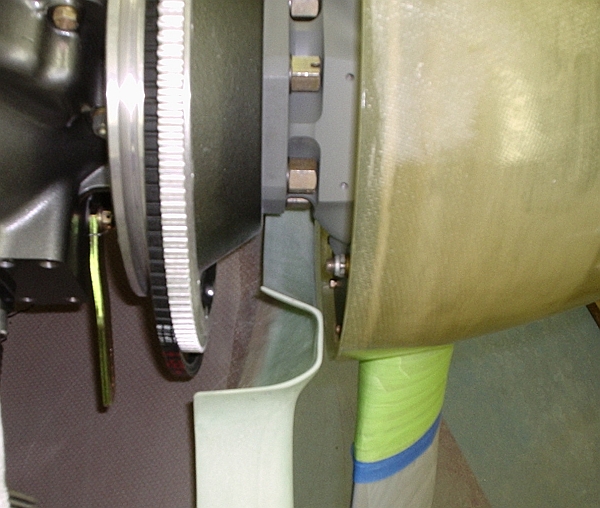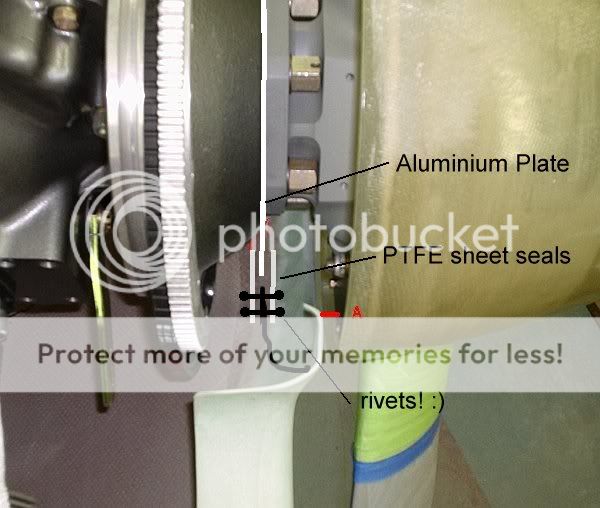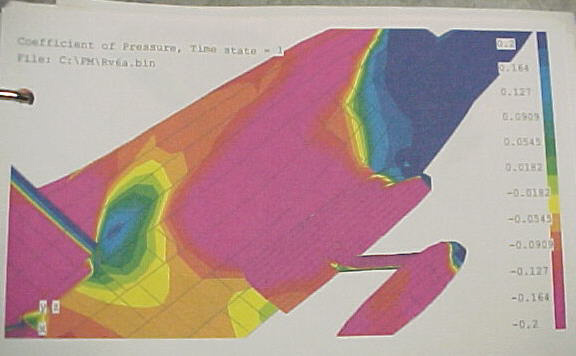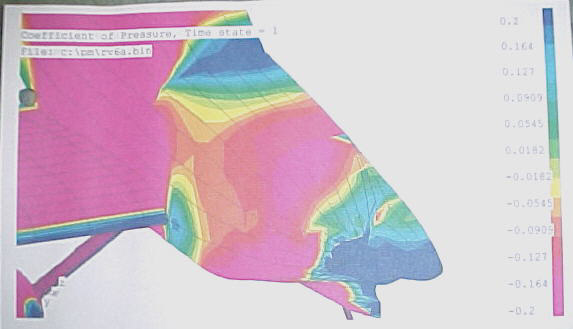Let's explore a thought. Why do some RV's cool better than others?
Set the obvious stuff aside and consider the basics. Air flows down through the cylinder baffles for one reason; the air pressure in the upper cowl is higher than the pressure in the lower cowl. If differential pressure is high, you get lots of air through the baffled cylinder fins. If the pressures are the same (zero differential pressure), no air moves through the fins. The majority of aircraft are somewhere in between.
I'm installing a cowl right now and got looking at the gap in the propshaft area:

Anybody have a CFD plot of local pressures around the nose of a Vans cowl? You know, the graphical plot with different colors for different pressures? (Dr Svingen called it CFD "porn" in another thread, which made me laugh.) As I recall, pressure around the base of the spinner is pretty high.
If so, I suspect the huge leak path provided behind the spinner signficantly reduces differential pressure (and thus cooling) by raising pressure in the lower cowl area. How huge is it? If the spinner-to-cowl clearance is 3/8", the area of the gap between the spinner and the cowl is 15 square inches (13"D x pi x .375"). That's more area than a 4" diameter round cooling plenum inlet (12.5 sq in).
Spinner-to-cowl clearance is highly variable between builders. A cowl fitted with a bare minimum of spinner clearance would have better differential pressure. With an 1/8" gap, area is down to 5 sq inches.
Maybe we should be thinking about how to seal the propshaft area....and there may be some data points available.
First, surely with 8000 RVs flying I'm not the first guy to think of this. Anybody with a report?
Second, I seem to recall Grumman owners talking about sealing in the propshaft area.
Three, I did an RV8 cowl for a friend with a large diameter Mooney spinner. That spinner mounted on the common bell-shaped backplate bolted to the ring gear carrier rather than the "bolt to the prop hub" backplate supplied by Vans. That required modification to the cowl nose behind the spinner. Bell-to-cowl clearance was kept to a minimum, and I recall CHT and oil temps to be excellent.
Last, if someone is willing to do a little flight test experiment......
Set the obvious stuff aside and consider the basics. Air flows down through the cylinder baffles for one reason; the air pressure in the upper cowl is higher than the pressure in the lower cowl. If differential pressure is high, you get lots of air through the baffled cylinder fins. If the pressures are the same (zero differential pressure), no air moves through the fins. The majority of aircraft are somewhere in between.
I'm installing a cowl right now and got looking at the gap in the propshaft area:

Anybody have a CFD plot of local pressures around the nose of a Vans cowl? You know, the graphical plot with different colors for different pressures? (Dr Svingen called it CFD "porn" in another thread, which made me laugh.) As I recall, pressure around the base of the spinner is pretty high.
If so, I suspect the huge leak path provided behind the spinner signficantly reduces differential pressure (and thus cooling) by raising pressure in the lower cowl area. How huge is it? If the spinner-to-cowl clearance is 3/8", the area of the gap between the spinner and the cowl is 15 square inches (13"D x pi x .375"). That's more area than a 4" diameter round cooling plenum inlet (12.5 sq in).
Spinner-to-cowl clearance is highly variable between builders. A cowl fitted with a bare minimum of spinner clearance would have better differential pressure. With an 1/8" gap, area is down to 5 sq inches.
Maybe we should be thinking about how to seal the propshaft area....and there may be some data points available.
First, surely with 8000 RVs flying I'm not the first guy to think of this. Anybody with a report?
Second, I seem to recall Grumman owners talking about sealing in the propshaft area.
Three, I did an RV8 cowl for a friend with a large diameter Mooney spinner. That spinner mounted on the common bell-shaped backplate bolted to the ring gear carrier rather than the "bolt to the prop hub" backplate supplied by Vans. That required modification to the cowl nose behind the spinner. Bell-to-cowl clearance was kept to a minimum, and I recall CHT and oil temps to be excellent.
Last, if someone is willing to do a little flight test experiment......
Last edited:









